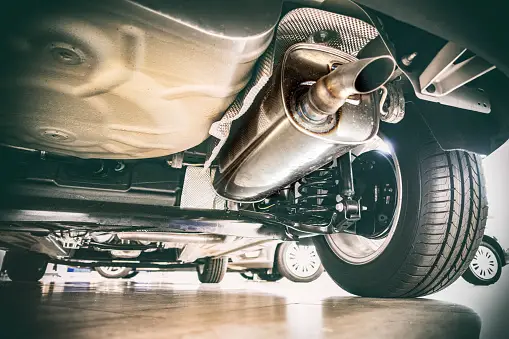December 3, 2023
Can you put water in your exhaust pipe?
It is not advisable to put water in your vehicle’s exhaust pipe. The exhaust system of a vehicle is designed to expel hot gases produced during the combustion process. Adding water to the exhaust pipe can lead to several potential problems:
- Damage to the exhaust system: The hot gases produced by the engine can cause the water to boil and turn into steam. This steam can cause damage to the exhaust components, such as the muffler, catalytic converter, and exhaust pipes, by creating pressure and potentially causing them to rupture or corrode.
- Reduced engine performance: Water in the exhaust can disrupt the flow of exhaust gases, leading to decreased engine performance and efficiency. This can result in reduced power output and fuel economy.
- Risk of engine damage: If enough water enters the exhaust system and makes its way back into the engine cylinders, it can potentially cause hydrostatic lock. This occurs when the water prevents the engine from turning over, potentially causing severe damage to the engine’s internal components.
- Safety concerns: Adding water to the exhaust system can lead to unusual sounds and increased exhaust emissions, potentially drawing the attention of law enforcement or causing a safety hazard.
In summary, it’s not recommended to put water in your exhaust pipe. If you suspect there is water in your exhaust system due to driving through deep water or other reasons, it’s best to have your vehicle inspected by a qualified mechanic to ensure that there is no damage or blockage in the exhaust system.
Is it OK for exhaust to drip water?
Yes, it is normal for exhaust systems to produce water vapor, especially when the engine is first started or during colder weather. This water vapor is a byproduct of the combustion process and the condensation of exhaust gases.
When you start your vehicle, the exhaust system is cold, and as hot exhaust gases flow through it, they come into contact with the cooler metal surfaces inside the exhaust system. This temperature difference causes water vapor to condense into liquid water, which can then drip out of the exhaust system. This condensation is usually more noticeable in colder weather because the temperature difference between the exhaust gases and the surrounding air is more significant.
This water dripping from the exhaust is normal and generally nothing to be concerned about. However, if you notice a significant amount of water or other fluids continuously dripping from the exhaust system or if the exhaust produces large amounts of white or gray smoke along with the water vapor, it could be a sign of a problem with the engine, such as a coolant leak or a head gasket issue. In such cases, it’s advisable to have your vehicle inspected by a qualified mechanic to diagnose and address any underlying issues.
Can water in exhaust cause white smoke?
Yes, water in the exhaust system can potentially cause white smoke to be emitted from the tailpipe. When water comes into contact with hot exhaust gases, it can vaporize and create a white steam-like exhaust plume. This is more likely to happen when the engine is cold or when you drive through a puddle or wet conditions.
However, it’s important to note that this white smoke from water vapor is typically temporary and should dissipate as the exhaust system heats up and the water completely evaporates. If you continue to see persistent white smoke coming from your exhaust, especially after the engine has warmed up, it may be a sign of a different issue, such as a coolant leak or a problem with the engine’s combustion process. In such cases, it’s essential to have your vehicle inspected by a qualified mechanic to diagnose and address any potential problems. Coolant leaks, in particular, can lead to engine overheating and damage if left unresolved.


